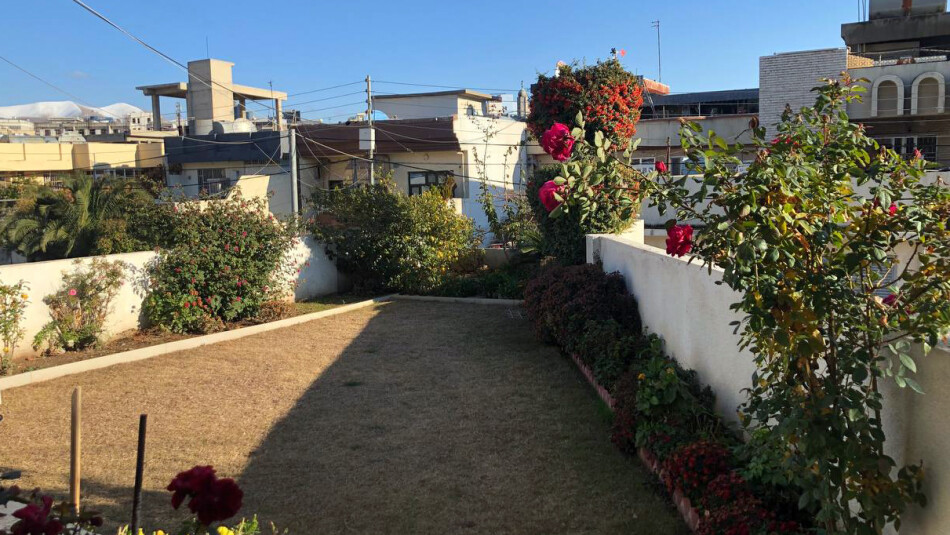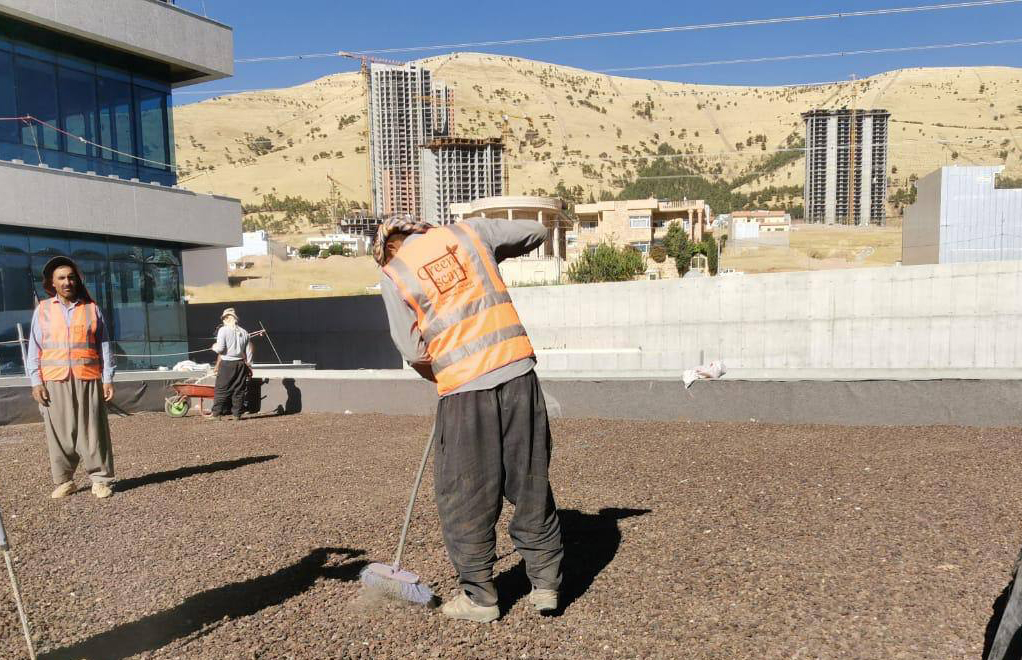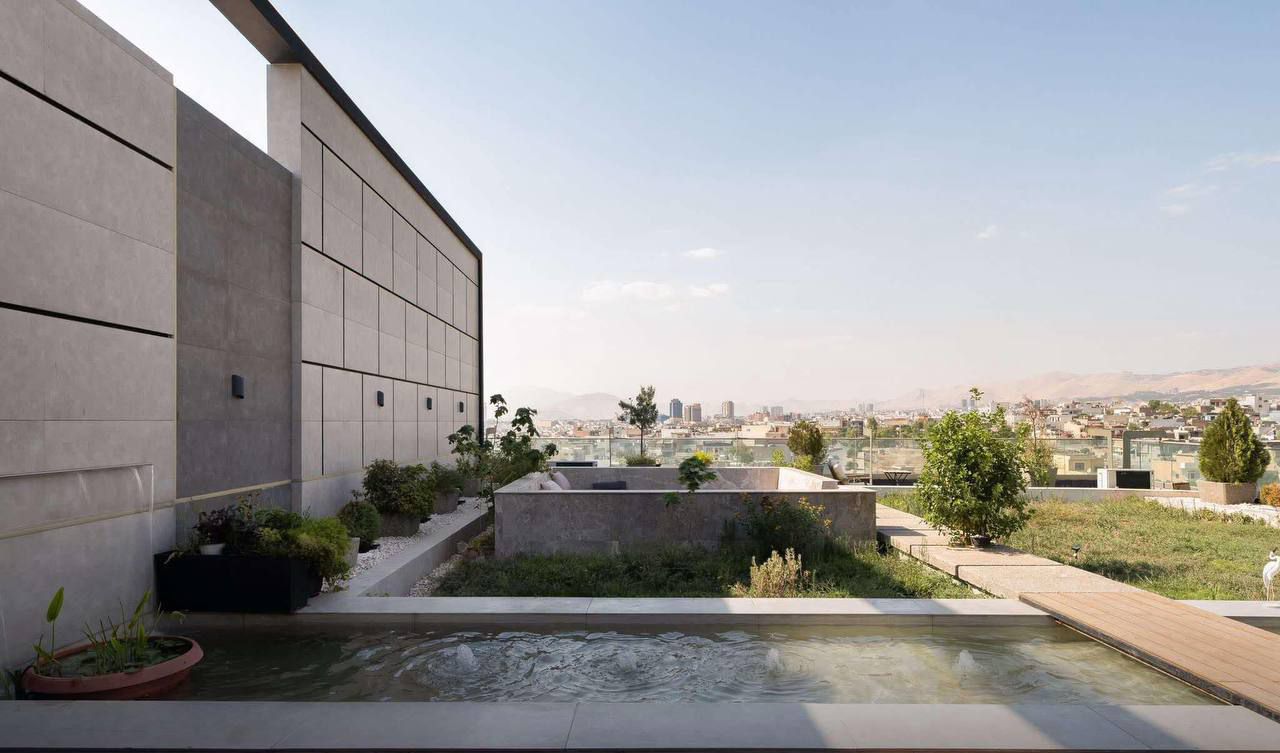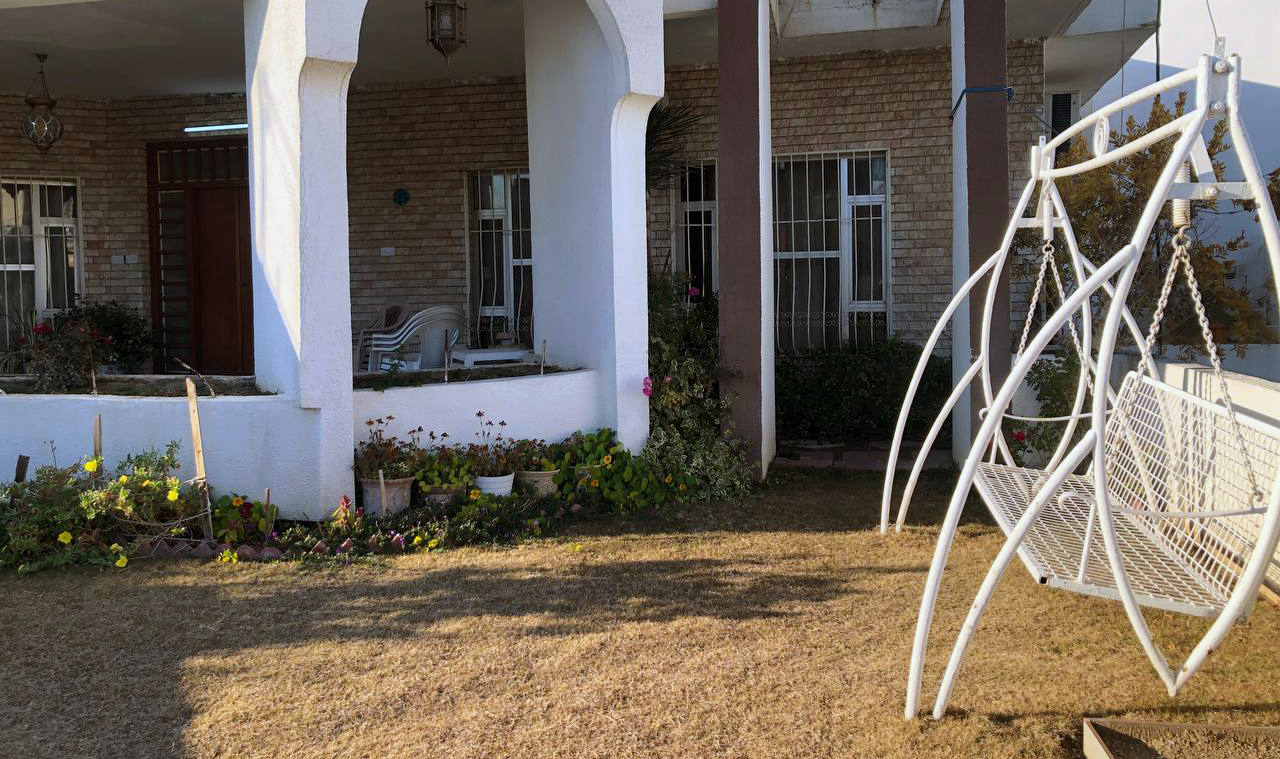
There is an abundance of grass and colorful flowers that if you were not standing on the roof of a multi-floor house, you will never believe that the greenery used to be bare cement.
Green Roofs, an environmentally friendly initiative, seeks to completely change popular perceptions about home gardens; In order to have greenery, trees and grass in a house, it does not have to have a yard of several hundred meters, but only a strong roof.
“Green roofs have a solution for everything. You can plant any tree you want,” said Dana Kamal, project manager of Green Scape, which is busy greening the roofs of houses and commercial buildings.
In addition to the beauty and cleanliness of nature, these projects will become homes for animals and birds, and the environmental benefits are not limited, from cleaning the air to take advantage of rainwater, and finally protect the house from cold and heat.
Greenery over Cement
Green Scape led by Dana Kamal, has been making green roofs since 2013, as in the Kurdistan Region and other parts of Iraq, the least area of houses is allocated for gardens and greenery and most of it is turned into buildings.
Kamal, 34, an irrigation engineering graduate, says the green roof “provides the best insulation against cold, heat and noise, preventing water from being wasted or rain damaging the roof and reduce its resistance.”
Green roofs have solutions for everything
Green roofing includes greening any hard surface other than soil like, an unnatural material, such as roofs, cement, garages, tanks and even walls.
"We will also green the garden with column walls, which is very important because everyone has a wall and does not allocate any new area to build the garden, this method has its own procedures and ways,” he added.
The project manager of Green Scape highlights the environmental benefits of green roofs, how it requires less water than an ordinary garden, because of the layers that store water and low depth, “If an ordinary garden needs 14 liters of water per square meter per day, the green roof takes 12 litres.”
Rooftop gardens absorb rainwater, instead of rainwater flowing freely into the sewer and sometimes causing flooding.
“Those who build green roofs are mostly cafeterias, villas and mostly residential projects, because they build the most apartments in a small area and in order to cover the space of greenery (required by the state), they build green roofs on buildings,” Kamal said.
According to the United Nations, the construction sector is a major contributor to global climate change, accounting for about 21% of global greenhouse gas emissions.

Huzar Mohammed, who has been working in his specialty since graduating from the university's forestry department, has been in charge of the construction of the city beach and is now working for Green Scape.
"Working on a green roof is more sensitive than greening an ordinary garden. It must be done by an expert because your soil must be light, contain enough nutrients at a shallow depth and not have much work every year.
She says she mixes four types of grass seeds to get an evergreen grass with the types of plants planted.
“The benefits and beauty of an ordinary garden are the same produce.”
The United Nations says Iraq is losing 10,000 hectares of fertile soil annually, making it the fifth most affected region in the world by climate change, with water shortages and drought two of the main factors.
The condition of a green roof is to have a strong house or building that can withstand soil, water and plants.
“Fortunately, many of the buildings can withstand our work,” said Kamal, who used to inspect the roofs through the civil engineering team checking for leakage, in order to be treated beforehand.
The roof must have wall sprinklers and drains, then the beginnings of installing the garden will begin in several stages. The most important task is to install four special layers, each layer for a purpose and all thickness does not exceed 7 centimeters each. The first layer is called the root barrier and is waterproof. It prevents the roots of plants from falling on the roof.
So far, we have built more than 20,000 square meters of green roofs
The second layer is like a blanket and protects the previous layer. The third layer is like an egg layer and stores water so that the plants always have water, and when it is too much, it sends it out through the drain. The last layer is called the filter cover. Only water passes through it and prevents anything but water from entering the other layers.
Dana said the clay used for the project is not ordinary clay, a mixture of a certain amount of (mud, agricultural clay, compost, bitumen and volcanic rock).
Environmentalists in raise
Bakhan Kamil, a civil engineer who has gained experience in building green roofs for years, said, “I like green work. I am happy that green roof is trending.”
She is confident that buildings in the region are suitable for green roofing. However, they test every building as the first procedure.
“All our buildings are strong enough to withstand the mud and water because the mud is light and will not damage the structure,” Kamil says.
She says green roofs are suitable for many places.
“It is must to have a roof, without damaging the building and its roof.”
In addition to helping to clean the air, green roofs also reduce greenhouse gas emissions, as houses require less heating and cooling equipment because the garden plays the role of insulation for the roof.
“So far, we have built more than 20,000 square meters of green roofs for more than 60 places,” Kamal said. There are six other green roof companies in Sulaimaniyah.
“There are hundreds of green roofs in Sulaymaniyah, more in Erbil and reached Baghdad.”

Kamal’s company used to receive only one application every two to three years for green roofs, but now it receives two or more applications a year. They also help university students, especially in the departments of irrigation and architecture, in their researches and thesis.
Shakhawan Salih, 31, said working on a green roof is easier than an ordinary garden. “I work on filling the soil and the irrigation system.
A house is not home without a garden
Hawkar Aziz, 35, has built a green roof for several years in one of Sulaymaniyah neighborhoods.
“I didn't have a yard or space in my house where I could grow greenery. For me, how a house should not be left without doors and windows, it also should not be without green space so I greened the roof of my house on an area of 20 square meters,” Aziz said.
"Because you put clay on the roof, it will be very useful for the heat and cold in the house, but it costs a lot and everyone cannot build it.”
Green roofs work as heat, cold and even sound insulation. Those who have done so do not need as much cooling or heating as bare roofs.
Sarhad Mohammed, 50, in Darbandikhan, has turned his three-storey 300-meter house into a garden with a 100-meter roof. He has turned his roof green in simple techniques he calls it profession secret.
“All the materials are local and simple. The work and the cost are cheaper than the offers by companies yet still it not cheap and difficult to perform,” he added.
“I have built this green roof for three years and it has no problems (so far).”
He used ordinary soil and even planted green beans because its flowers attract bees. He also planted okra and its produce was enough for one year.
Sarhad describes his garden a lot and says he has benefited from it and loves it. "I don't live without a garden and greenery," he said.
Green roofs are a service to birds, butterflies and other insects that are now declining in number due to urban air pollution, congestion and lack of green space.
Shanaz Jalal, a university professor, has a different story. Instead of a roof, she built a garden on tiles in her yard because she knew that even by removing the tiles would not easily reach soil level.
The company's cost was high, so they built the garden themselves. In several stages, they greened the yard on tiles by placing sand and ordinary soil.
She greened the yard on tiles and now has pine trees, green fence, oranges and grass. “The grass is more resistant than other garden because it doesn't get hot and cold and needs water like any normal garden,” Shanaz said.

Replacement of tile yard for green space, Sulaimaniyah, 2024. Bwar Qadir
Green yet costly
The biggest challenge with green roofs which has prevented many people is the high cost, which is not affordable by every family.
“The cost is very high and 10 times the cost of an ordinary garden, so that an ordinary garden costs $ 10 to 15 per square meter, but the green roof costs $ 80 to $,” Kamal said. That's why the demand by people is limited.
The quality of green roofing materials and supplies should be at the highest standards. Dana cites the example of a garden on a bridge in Sulaimaniyah, where the flowers and greenery dried up quickly because only ordinary soil was placed on the cement without any previous layer.
The green roof project is self-sustaining and takes a long time. Once the layers of the project are laid properly, the normal garden will be established and the flowers will bloom.
Mustafa Juma, spokesman for the Sulaimaniyah Environmental Office, said, "We recommend the roof gardens because they are green and we support them.”
Regarding residential projects, the environmental official said that when the roofs of buildings are greened, it is considered half of the area that the company is obliged to green within the framework of its project.
“If a company is required to build 100 meters and they build it on a green roof, it is counted as 50 meters and the other 50 meters must be on the ground.”
*This story has been produced within the framework of the program to expand the role of women journalists in environmental coverage, by KirkukNow Media Outled, funded and supported by the Ministry of Foreign Affairs of the Federal Republic of Germany.